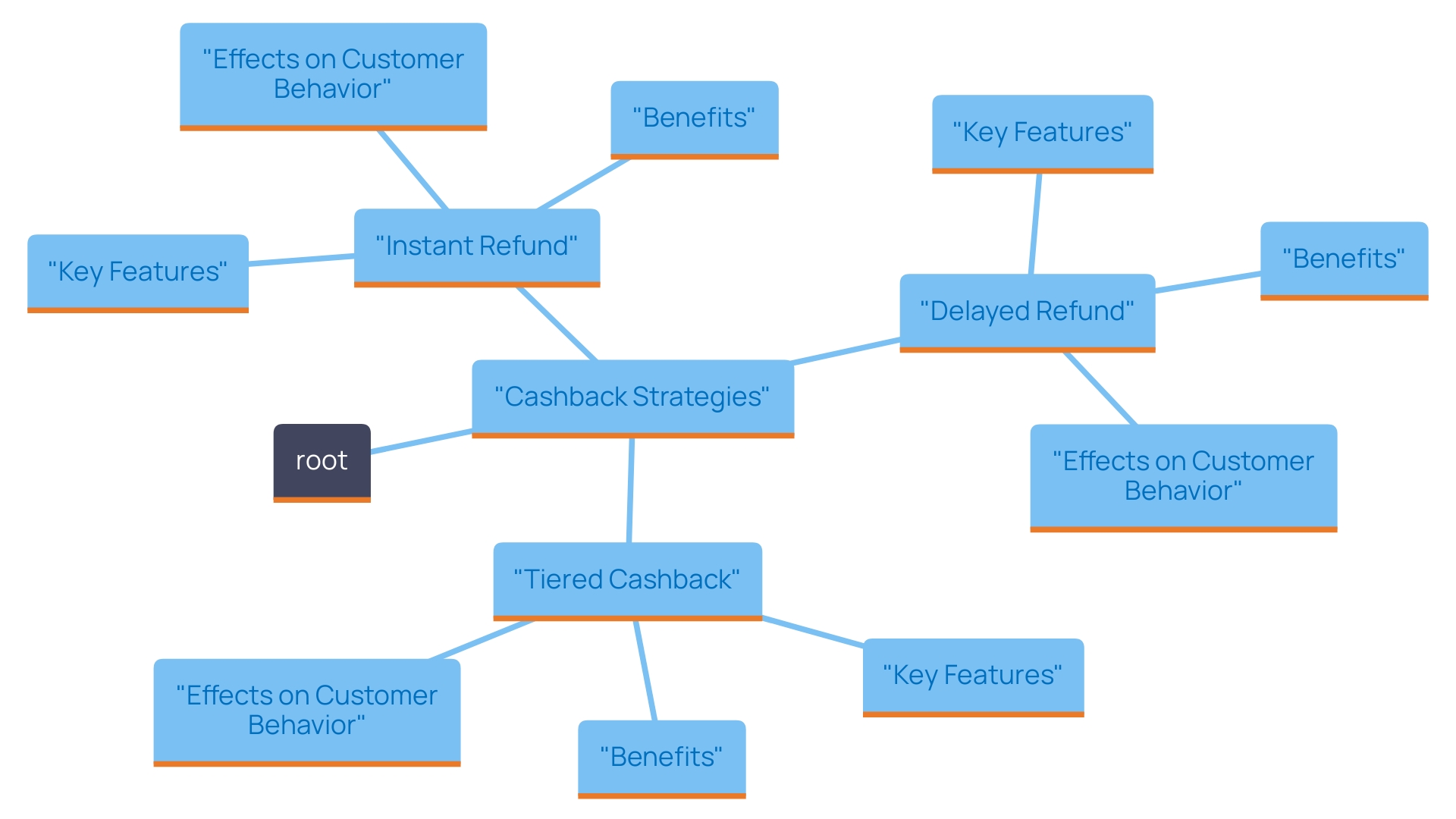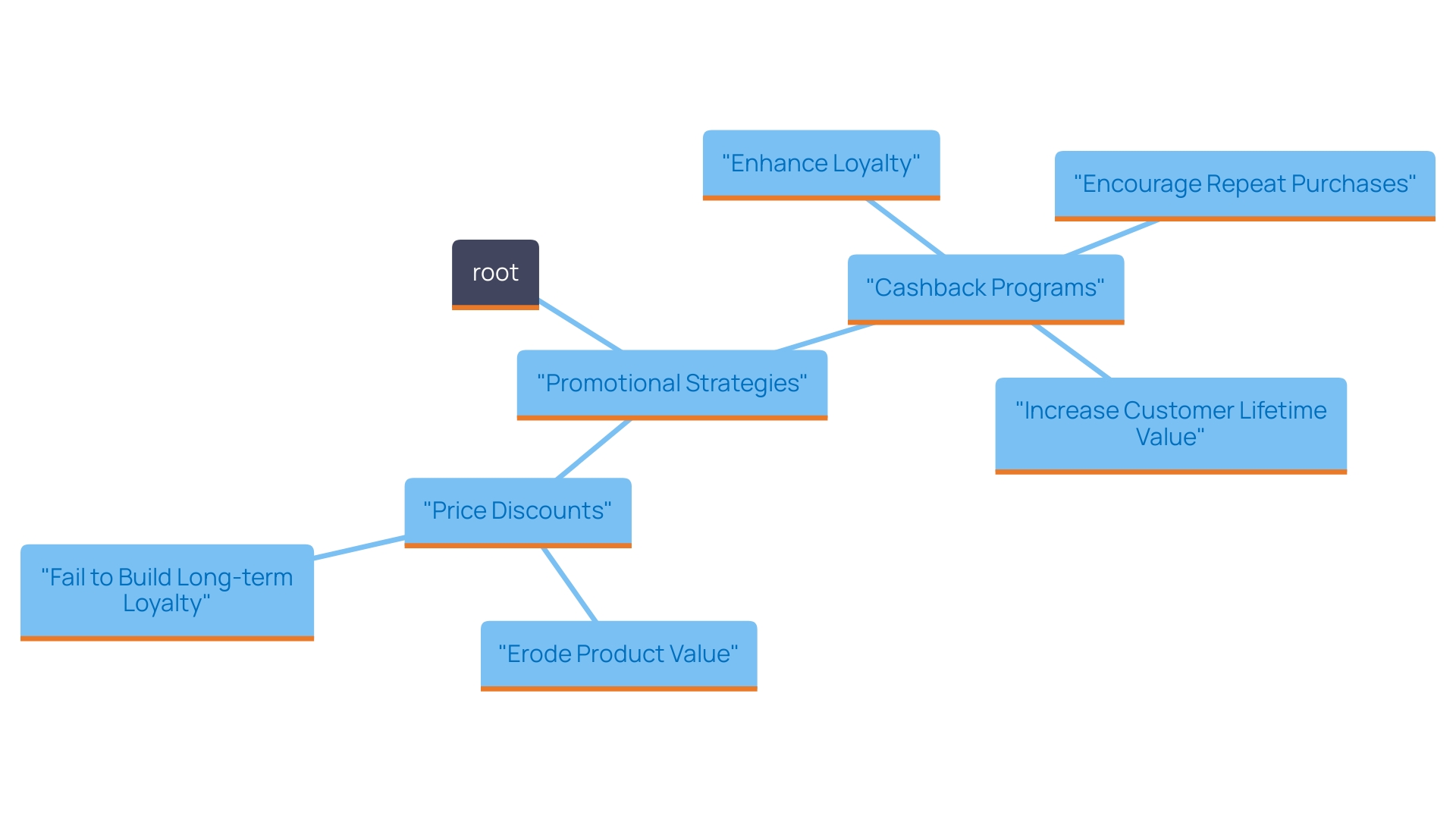Introduction
In the competitive landscape of modern retail, cashback promotions have emerged as a powerful tool for engaging consumers and driving sales. By offering customers a percentage of their purchase back as a rebate, businesses not only incentivize immediate spending but also cultivate long-term loyalty. With research indicating that a significant majority of consumers are more likely to return to stores that provide cashback offers, understanding the mechanics and strategies behind these promotions is crucial for any organization looking to enhance its marketing efforts.
This article delves into the various types of cashback strategies, evaluates their financial impact compared to traditional price discounts, and outlines practical steps for implementing digital cashback rebates effectively. By harnessing the potential of cashback promotions, businesses can create compelling customer experiences that lead to sustained growth and profitability.
Understanding Cashback Promotions: Definition and Mechanism
Cashback promotions represent a strategic marketing approach designed to encourage consumer spending by rewarding individuals with a percentage of their purchase amount as a rebate. This mechanism typically operates through unique tracking links or codes, enabling businesses to seamlessly credit clients post-sale. For example, when a buyer acquires a product costing $100 with a 10% rebate incentive, they effectively receive $10 back, which can be credited to their account or issued as a direct payment. According to recent studies, 82% of consumers reported that they would shop more frequently at stores they haven't visited in a while if informed about a rebate offer, highlighting the effectiveness of such promotions in driving consumer engagement.
Comprehending how rebate promotions operate is essential for any business seeking to implement them effectively. This knowledge not only guides the creation of promotional approaches but also significantly influences consumer behavior and buying choices. As Jason Dorsey, president and co-founder of The Center for Generational Kinetics, states, 'the study results emphasize that seamless reward programs are a high ROI approach for merchants to engage with clients of every generation.' This insight highlights the potential of rebate promotions to enhance buyer engagement across various demographics, making them a compelling element of contemporary marketing approaches. Furthermore, successful case studies, like those where retailers introduced rebate offers during promotional events, demonstrate the real-world effect these incentives can have on sales and client loyalty.

Exploring Different Types of Cashback Implementation Strategies
When considering cashback implementation strategies, businesses have several effective options to enhance customer engagement and drive sales:
-
Instant Refund: This approach enables buyers to obtain their refund instantly at the point of sale, generating a strong motivation for immediate purchases. The allure of instant gratification not only boosts conversion rates but also enhances satisfaction, fostering loyalty. Considering that almost half (49%) of consumers show interest in gamification features, incorporating immediate rewards with engaging elements can further enhance its attractiveness. Experts propose that providing immediate rewards can significantly boost client retention and repeat purchases, highlighting the effectiveness of this strategy in contemporary retail settings.
-
Delayed Refund: In contrast, this method necessitates individuals to submit a claim or wait for a designated duration to obtain their refund. While this method can be advantageous for cash flow management and tracking, it may lead to lower immediate conversion rates. However, businesses that effectively communicate the advantages of delayed rewards can still harness its potential. For instance, brands that emphasize long-term rewards and loyalty benefits can tap into consumer patience, encouraging them to wait for greater rewards over time. Research shows that clear communication regarding the postponed refund process can improve client understanding and acceptance, making it a feasible approach despite its possible downsides.
-
Tiered Cashback: This approach encourages larger purchases by providing escalating cashback percentages based on a buyer's total spending. By rewarding loyalty with increasing advantages, companies can motivate clients to spend more, raising average order values. This approach aligns well with current trends where gamification and loyalty programs are gaining traction; brands utilizing such methods have witnessed a remarkable 35% increase in store visits.
Choosing the appropriate rewards approach requires thoughtful evaluation of your clientele and overall business goals. By assessing these choices with an emphasis on consumer preferences—particularly the increasing tendency towards instant rewards—companies can enhance their promotional efforts to maximize engagement and boost profitability.

Evaluating Financial Impact: Cashback vs. Price Discounts
When evaluating the financial effect of cashback promotions compared to price reductions, it is essential to consider several key factors that affect consumer behavior and retention.
Cashback Benefits:
Cashback programs can significantly enhance loyalty by encouraging repeat purchases. This is supported by data indicating that 78.1% of respondents believe diverse reward redemption options positively impact client retention and satisfaction. By motivating clients to revisit your store to claim their rebates, rebate programs establish a cycle of interaction that can result in enhanced lifetime value. For example, case studies have demonstrated that companies adopting strong rebate programs experienced a significant increase in returning clients and overall sales.
Price Discounts:
While price discounts may drive immediate sales spikes, they often lack the ability to cultivate long-term loyalty. Frequent discounting can erode the perceived value of your products and lead individuals to expect lower prices as a norm, diminishing the overall brand experience. Studies show that companies dependent on price reductions often encounter difficulties in keeping clients compared to those providing rebate incentives.
To make informed decisions, utilize a cashback versus price discount calculator to simulate revenue impacts across various scenarios. This analytical tool will allow you to identify which promotional approach aligns with your financial goals and improves client retention efforts. With 46.9% of consumers believing that diverse reward redemption options are cost-effective, understanding these dynamics is essential for making strategic choices that enhance both profitability and loyalty. Integrating expert insights, many financial specialists promote refund strategies as they not only drive sales but also build a more engaged customer base.

Implementing Digital Cashback Rebates: A Practical Approach
Implementing digital rebates effectively requires a strategic approach. Here are essential steps to guide you through the process:
-
Select a Rebate Platform: Begin by identifying a reliable rebate management platform that can integrate seamlessly with your existing e-commerce system. Look for key features such as automatic tracking and comprehensive reporting capabilities, which can streamline operations and enhance user experience. According to recent statistics, companies that efficiently employ rebate platforms have reported an increase in client retention rates by up to 25%.
-
Design Your Rebate Program: Carefully determine the percentage of rebates you intend to offer, alongside the specific conditions for eligibility. Striking the right balance is crucial; your program should be enticing to customers while remaining sustainable for your business's financial health. A successful program typically provides refunds ranging from 5% to 20%, depending on your industry and profit margins.
-
Market Your Refund Promotion: Utilize various digital marketing channels—including social media, email campaigns, and targeted online advertisements—to effectively promote your refund offer. Tailoring your messaging to resonate with your audience will enhance engagement and drive participation in your program. As reported by the Federal Reserve, companies that employ targeted marketing techniques can see a significant increase in conversion rates, often exceeding 30%.
-
Monitor and Analyze Performance: Regular tracking of your rebate promotions is vital. Utilize analytics tools to assess the success of your initiatives and gather insights on consumer behavior. This data will enable you to modify your approach proactively, optimizing performance and maximizing your return on investment. For example, companies that consistently improve their rebate strategies based on analytics have reported an increase in ROI by up to 40%.
By adhering to these strategic steps and considering the statistics and insights shared, businesses can establish effective digital rebates that not only drive sales but also foster long-term customer loyalty. This approach is reinforced by the growth trends observed in the e-commerce sector, where well-implemented cashback programs have shown impressive success rates, including examples like [insert relevant case study or successful cashback program].

Conclusion
In today's competitive retail environment, cashback promotions stand out as a dynamic strategy for enhancing customer engagement and driving sales. By offering consumers a percentage of their spending back as a rebate, businesses not only incentivize immediate purchases but also foster a sense of loyalty that can lead to repeat business. The effectiveness of these promotions is underscored by research showing that a significant majority of consumers are more inclined to return to stores that provide such offers.
Different cashback implementation strategies—ranging from instant to tiered cashback—offer businesses the flexibility to tailor their approach to meet customer preferences. Each method presents unique advantages, allowing companies to optimize their offerings based on their target audience's behavior and expectations. Furthermore, the comparison between cashback and traditional price discounts reveals that cashback programs can cultivate deeper customer loyalty and higher lifetime value, making them a more sustainable choice for long-term success.
Implementing digital cashback rebates requires a thoughtful strategy, from selecting the right platform to effectively marketing the program. By closely monitoring performance and adjusting tactics based on consumer insights, businesses can maximize their return on investment and create compelling customer experiences. As organizations increasingly embrace cashback promotions, they position themselves not only to boost short-term sales but also to build a loyal customer base that contributes to sustained growth and profitability.





